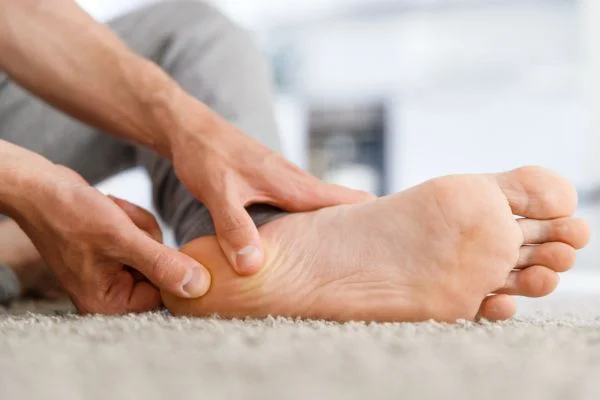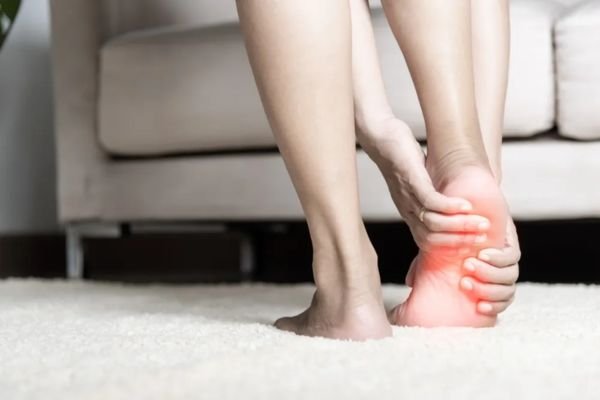Bursitis occurs when fluid builds up in the bursa sac between bones and soft tissues. It occurs when inflammation or irritation of the sac causes it to become inflamed and filled with fluid. This can cause pain and swell in the foot, making it difficult to walk or stand for long periods. Thankfully, you can take steps to manage your bursitis and get back on your feet again. So let’s look at how to fix bursitis in foot!
To fix foot bursitis, rest, ice, and anti-inflammatory medication can help. Proper footwear and orthotics, along with physical therapy, may also be recommended for pain relief and recovery. Consult a healthcare professional for a tailored treatment plan.
How To Fix Bursitis In Foot | Effective Ways
Resting Your Foot
The first step to managing bursitis is resting your foot. A good rule of thumb is to keep off your foot as much as possible until the swelling has gone down. If you must put weight on your foot, try using crutches or a cane for extra support.
Additionally, try elevating your foot when you are sitting or lying down. This will help reduce swelling and relieve symptoms such as pain and tenderness.
Stretching & Strengthening Exercises
Once the swelling has gone down, you must start doing regular stretches and strengthening exercises for your foot. Stretching helps improve flexibility and range of motion, while strengthening exercises help build strength and stability around the affected area.
Some stretching exercises include toe curls, ankle circles, heel drops, calf stretches, etc., while some strengthening exercises include toe raises, heel raises, ankle pumps, etc.
Make sure to consult with a physical therapist before beginning any exercise program so that they can give specific instructions for your individual needs.
Also Read: Can You Run With Knee Bursitis?
Medication & Ice Packs
Taking an over-the-counter anti-inflammatory medication such as ibuprofen or naproxen can also help reduce inflammation and relieve pain associated with bursitis in the foot.
Additionally, applying ice packs directly onto the affected area can help reduce swelling by numbing the area temporarily and providing soothing relief from discomfort.
However, make sure not to apply ice directly onto the skin but instead use a thin cloth as a barrier between the skin and the ice pack for maximum comfort and effectiveness!
Restoration of Movement
Another step towards treating your foot’s bursitis is restoring movement and strength. This may involve stretching, range of motion exercises, and strengthening exercises for the muscles around the affected joint.
These exercises are designed to improve flexibility and strength to help relieve pain and prevent future episodes. It’s essential to work with a physical therapist or another healthcare professional who can provide individualized instruction on how to perform these exercises safely and effectively.
Medication & Surgery
Nonsteroidal anti-inflammatory drugs (NSAIDs) may also be used to treat bursitis in your foot if over-the-counter medications aren’t enough. In rare cases, surgery may be necessary if other treatments fail or if there is an underlying condition causing bursitis that needs to be addressed surgically. Your doctor can determine the best treatment option for you based on your needs and situation.
Also Read: What Does A Knee Brace Do For Your Knee Bursitis?
How Long Does It Take For Foot Bursitis To Heal?

Unfortunately, there isn’t a simple answer to the question of how long it takes to heal when it comes to foot bursitis. Bursitis is a painful inflammation or irritation of the bursae in the foot and can be caused by any number of reasons, such as injury or overuse.
Furthermore, everybody responds differently to treatment protocols like rest, anti-inflammatory medication, and physical therapy, so that healing times can vary widely from person to person.
Despite these varying factors, most cases typically last several weeks to months before signs of improvement are felt and may even extend longer depending on intensity and injury severity.
To ensure successful treatment, it’s important to discuss your condition with a qualified professional who can help provide you with an accurate diagnosis and therapeutic plan fit for you.
Also Read: How To Tape Knee For Bursitis?
Wrapping Up:
So, how to fix bursitis in foot? Bursitis in the foot can be a painful condition that makes it difficult to walk or stand for long periods; however, there are several steps you can take to manage this condition effectively!
First, resting your foot until the swelling goes down is critical; then, begin stretching and strengthening exercises while taking medication if needed and applying ice packs directly onto affected areas for temporary relief from discomfort!
With these simple tips, you’re ready to tackle bursitis head-on! Good luck!

